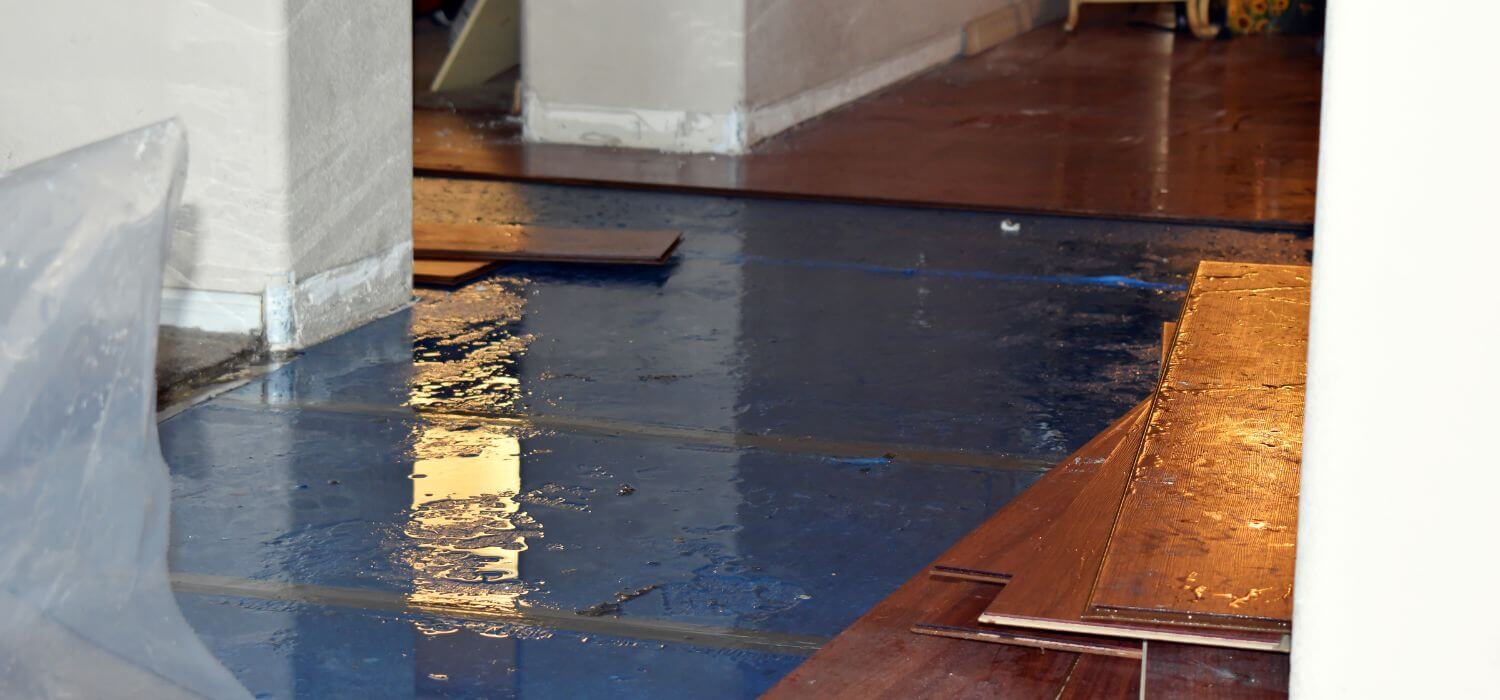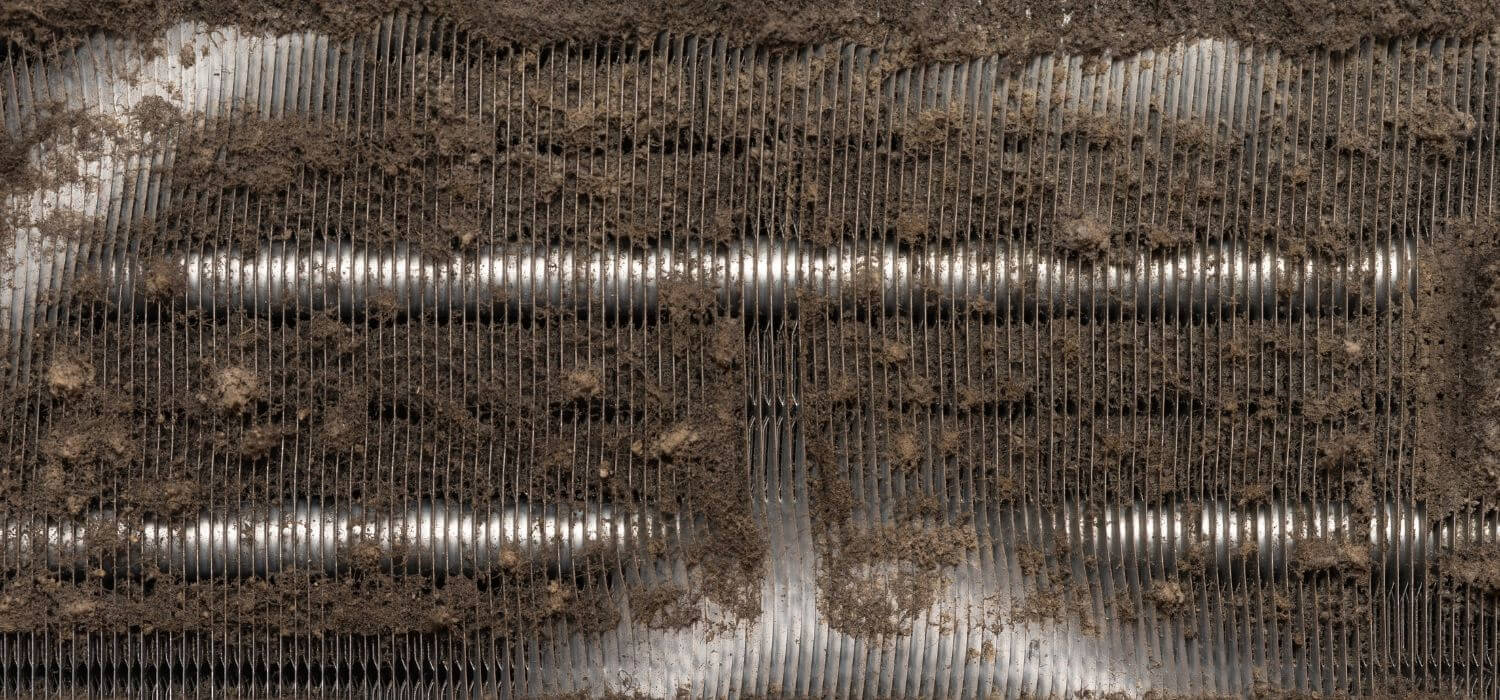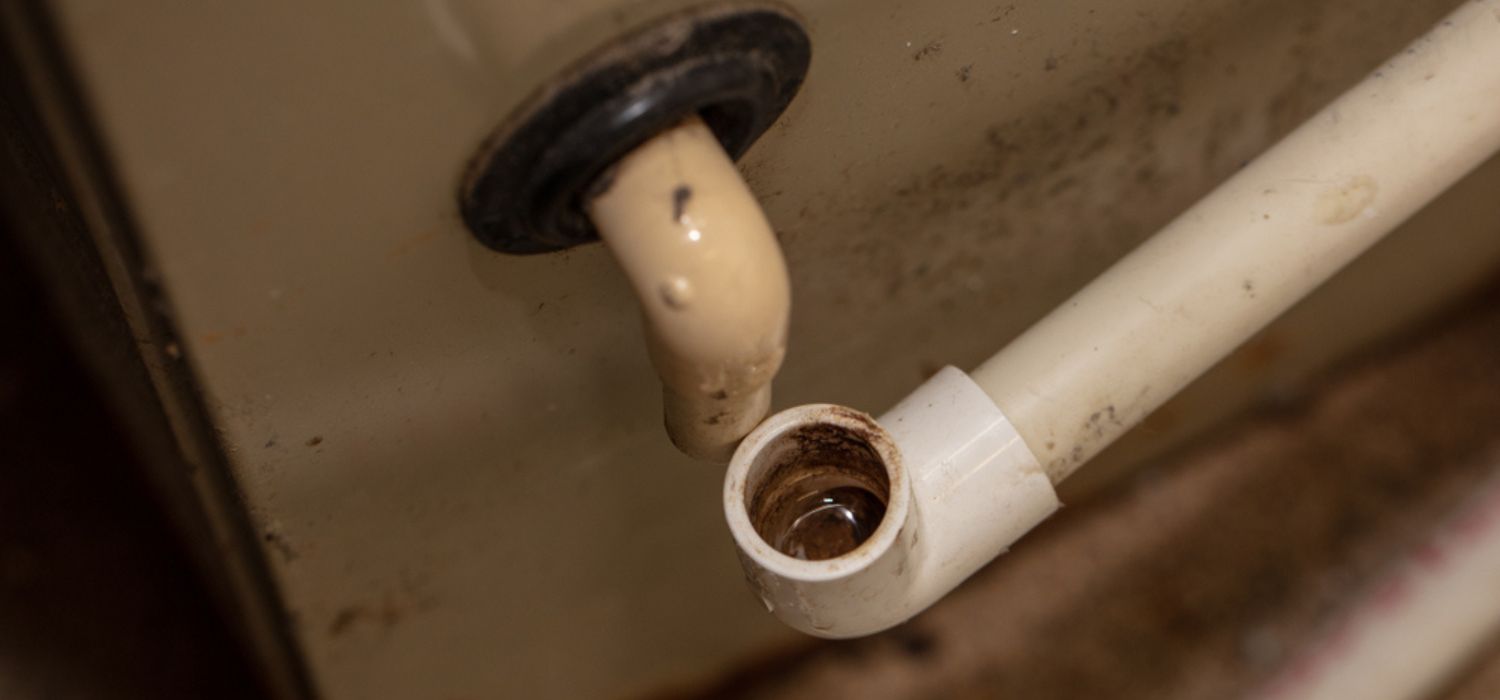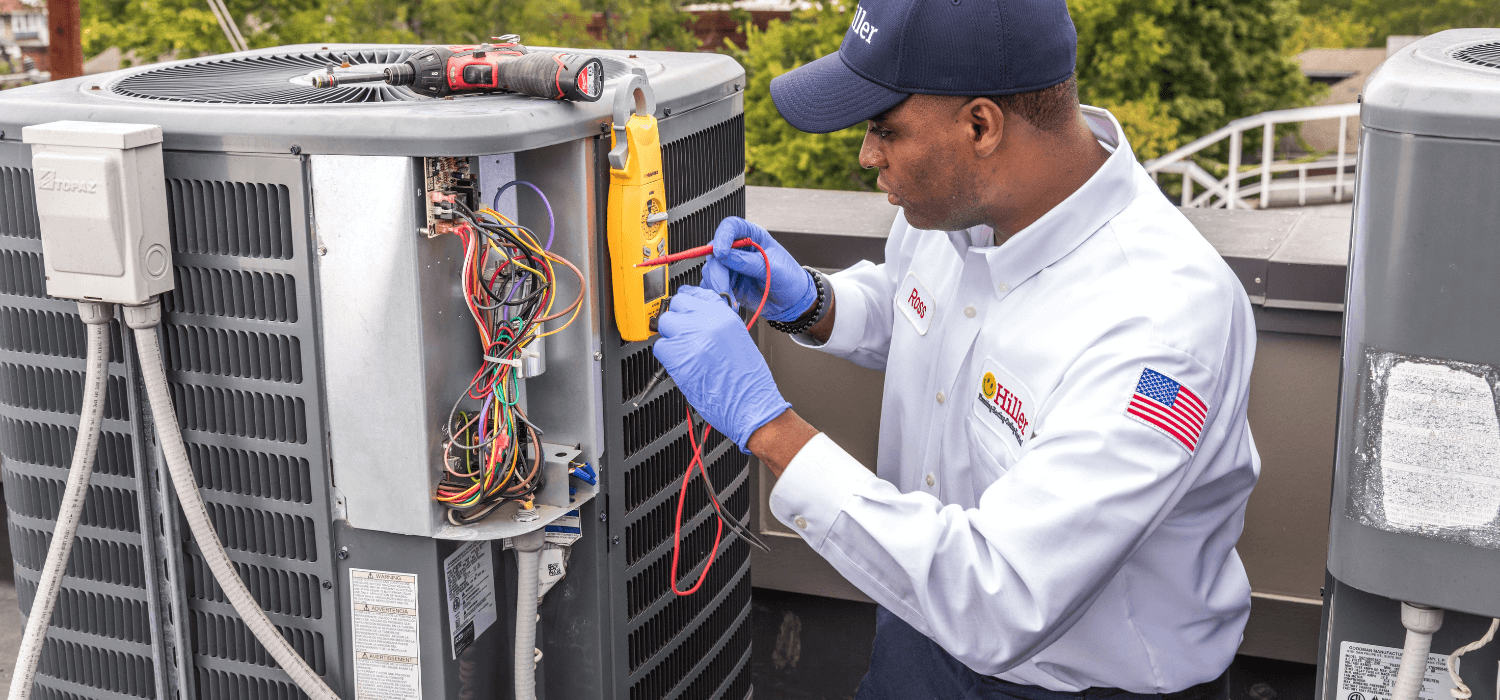Common Reasons for an HVAC Leak and How to Stop It
Enjoy reading the latest DIY articles and saving money?
Receive our latest helpful hints, tricks and savings, directly to your inbox.
Posted October 24, 2025
Did you know that in 2021, the average residential electricity bill in the United States was $121.01? That’s already high, but it was even higher in the East South Central region, where bills averaged $134.62. Within the region’s four states, Alabama paid the most; $147.75 a month for electricity alone.
But if you have an HVAC leak, you’ll pay even more. Leaking heating and air conditioning units also pose other dangers, such as mold and gas. For these reasons, it pays to know the common reasons for HVAC leaks and how to address them. We’ll tell you all about them below.
Water Leaks
HVAC problems with air filters, drain lines, drain pans, and coils can cause a heater or AC to leak water. These issues can promote mold and mildew growth, which can, in turn, affect your family’s health. They can also cause expensive water damage, mainly if not addressed immediately.

Dirty Air Filters
Filters protect an HVAC system’s interior components from pollutants like dirt and lint. Examples of these parts include evaporator coils, condenser coils, and fans.
Evaporator coils absorb heat and moisture from the air with the help of the refrigerant. Condenser coils then bring the removed heat and disperse it outside. HVAC fans, in turn, blow air over these coils and help circulate conditioned air in a space.
When dirt and debris clog up air filters, they restrict airflow into the system. Airflow restriction can reduce pressure and heat loads entering the evaporator coil. Unfortunately, that can lead to the refrigerant reaching a below-freezing temperature.
When that happens, the refrigerant can freeze evaporator coils solid. Then, as the ice thaws, the HVAC leaks. To prevent such heating and air conditioning woes, check air filters every few weeks. If they have visible dirt buildup, replace or wash them right away.
If you have fiberglass filters, change them monthly. If you have higher-end ones, you can swap them for new ones every few months. If your system is already leaking water, it’s best to call an HVAC repair company ASAP. Otherwise, it’ll likely keep dripping, and the water can corrode it and ultimately make it fail.
Filthy Evaporator Coils
Dirt and residue can prevent evaporator coils from absorbing heat from the air. As a result, the metal loops become colder, potentially freezing the condensation. The melting ice then drips and can fill the drain pan faster than the tray can channel water out of your house.

Dirty air filters, once again, are common culprits behind grimy evaporator coils. A lack of HVAC maintenance can also cause this problem. Thus, replacing air filters and regular system tune-ups can prevent them from icing up.
Call your local HVAC repair technician if you already experience frozen coil symptoms.
Damaged Condensate Drain Pan
An HVAC system’s condensate drain pan is a tray that sits right below the evaporator coils. It catches condensation that forms as the warm, moist air passes over the cold metal loops. Some systems have two pans, one is the primary, and the other is a backup.
Most HVAC systems nowadays use plastic drain pans since metal trays are prone to rust and leaks. However, even plastic ones sustain damage over the years and can buckle, crack, or split.
A damaged condensate drain pan can’t hold water; instead, it lets the fluids trickle out. So if you find water pooling around your indoor HVAC unit, take that as a sign you have a leaking tray. If the damage is tiny, you may be able to fix a leaking pan using water-resistant epoxy glue. However, if there are massive cracks, it’s best to leave the HVAC repairs to a professional.
Before attempting any DIY HVAC repairs, please power off the entire system first. Don’t just turn it off with the thermostat; shut it down through your main circuit breaker panel. That way, you can prevent electrical injuries or shocks.
Please don’t ignore leaking HVAC drain pans since they can damage nearby structures. The leaking water can increase indoor humidity, too, promoting mold growth. Mold exposure can be a health risk, especially for the 10% of Americans with mold allergies.
Disconnected Condensate Drain Line
A condensate drain line is a pipe connected to the drain pan. It channels the water the tray collects outside of your home. If your HVAC unit has two drain pans, it also has two drain lines.

If the drain line becomes loose or disconnected, the drain pan won’t have anywhere to send the water. As a result, the water leaks out of the pan, pools outside the tray, and damages the surrounding area. If mold spores land on those wet spots, they can grow in about a day or two.
You can reconnect the drain line yourself, but if it has damage, call an HVAC technician to fix or replace it.
Clogged Condensate Drain Line
When the drain line itself gets clogged, the water that the drain pan collects can’t leave. Instead, it builds up in the tray, filling it and potentially overflowing.
When a drain pan overflows, the water can leak out of its sides. Condensate drain lines can clog due to dust, dirt, and other particles trapped by moisture. If you’re part of the 90.5 million U.S. families with pets, their dander can also contribute to the blockage.
A solid indication you have a clogged condensate line is if the drip pan has standing water. If you’re up for it, you can use a wet vac to suck those fluids or absorb them with rags and towels. You can then wash the tray with soapy water to remove surface obstructions like debris and mold.
If the pan still holds water, the clog may be by the drain pipe’s exit point. You can find this outside, usually near the outdoor HVAC unit, covered with a PVC cap. You can use a wet vac to suck out the debris from this end.
However, the clog may also be deep in the drain line. In this case, your best bet is to call a specialist for professional HVAC solutions.
Refrigerant Leaks
Refrigerant leaks can cause the evaporator coil to freeze over and result in water leaks. When the iced-up coils thaw, they can then make the drain pan overflow. A more insidious effect of refrigerant leaks is potential asphyxiation. That’s because refrigerants are asphyxiants, which means they displace oxygen. Thus, inhaling the gas forms of these chemicals can cause your body’s oxygen levels to drop.
Some mild symptoms of refrigerant poisoning include headaches, nausea, and coughing. These are more common in well-ventilated areas, as ventilation prevents gas buildup.

Refrigerant leaks in enclosed spaces are more dangerous, as the gas builds up in high amounts. More severe symptoms, such as labored breathing and fainting, can occur in this case. Although rare, it can also cause life-threatening coma.
Refrigerant leaks can occur due to metal corrosion caused by wear and tear or a lack of maintenance. However, they can also result from factory defects and improper installation. That’s why it’s crucial to hire a professional when replacing or buying a new HVAC system.
If you suspect your HVAC has a refrigerant leak, call a professional repair company ASAP. Aside from being harmful, refrigerant is also expensive, which is why you don’t want any more of it to leak.
Air Leaks
Air leaks in HVAC systems occur throughout the ductwork. When your ducts leak, they cause comfort issues and poor HVAC performance. They can also cause your energy bills to rise, as they can waste up to 40% of heating and cooling energy.
Leaky ducts can also promote mold growth because they suck humid air. The more humid the air is, the more water it contains, something that molds love. Duct leaks can also cause uneven cooling and heating throughout your home. As a result, some rooms may feel too hot, too cold, stuffy, and uncomfortable.

Missing screws, ill-fitting cover panels, and disconnected joints can cause ducts to leak. Other culprits include crushed or punctured duct sections. Damaged or worn duct insulation also adds to the problem by allowing heat gains and losses to occur.
You can try to stop air leaks by screwing all metal fittings firmly and sealing loose duct joints. You can also use certified duct tape to fix small openings, holes, or tears in the ductwork. For more severe duct damage like crushed sections, call an HVAC repair professional.
Oil Leaks
Oil leaks from an HVAC system can be due to a refrigerant leak, a faulty compressor, or a problem with an oil furnace. Refrigerants contain oil designed to lubricate the compressor. So when there’s a refrigerant leak, it can leave oily residues in the damaged area. And since oil attracts dust, you might notice these leaks as discolored spots.
An oil leak can also be due to a faulty compressor with broken rods or damaged sections. Worn rubber seals and rusted metal parts are other potential culprits. Like a refrigerant leak, an oil leak requires professional inspection, diagnosis, and repairs.
An oil furnace can leak oil through a damaged oil pump, feed line, valve, or gasket. The problem may also occur if the oil tank itself has a puncture. If your furnace feed line or gasket leaks oil, you may be able to fix it with a sealing compound. This sealant’s specialized formula makes it resist oil, and you can use it for tiny holes. However, more extensive damage may require repairs or replacement by an HVAC professional.
Natural Gas Leaks
Issues with a natural gas-powered furnace can cause the energy source itself to leak. Punctures in the gas line and worn seals are among the most common causes of leaks.
A tell-tale sign of a natural gas leak is the nose-cringing smell of sulfur or rotten eggs. That’s due to the mercaptan added to natural gas. Natural gas itself is odorless, so the addition of mercaptan makes leaks easier to detect.
Note, though, that sulfur or rotten egg odors can also be a sign of sewage and plumbing problems. For example, decaying matter stuck in drains can emit hydrogen sulfide. It’s a sewer gas that smells like rotten eggs and can leak into your home.

If the foul smells come with hissing sounds near the furnace, they likely indicate a gas leak. In this case, please evacuate every member of your home, including pets. Natural gas, like refrigerants, is also an asphyxiant, causing health and safety threats.
While you exit your home, please open as many doors and windows as possible. That can help ventilate your house and allow the gas to escape, not build up indoors. Once outside, please call your local gas company and an emergency HVAC service.
Combustion Gas Leaks
Your furnace’s heat exchanger consists of metal coils that heat the air inside your home. However, heat exchangers can crack and fail earlier due to overheating. Overheating, in turn, can result from dirty air filters and a lack of regular maintenance. Oversized furnaces and improper installation can also cause this problem.
When your furnace’s heat exchanger cracks, it can leak gases into your home. That includes natural gas and combustion gases, such as carbon monoxide (CO). CO is a deadly gas that lands up to 20,000 Americans in emergency rooms yearly. It also causes over 4,000 people to require hospitalization.
You can prevent early heat exchanger failure with timely air filter replacement. Likewise, having your heating system professionally inspected and tuned-up yearly can help. If you suspect you already have a cracked heat exchanger, please turn off the furnace ASAP. Then, call an HVAC repair specialist to diagnose and fix the problem.
Never Ignore an HVAC Leak
An HVAC leak is a problem you should never ignore because, at the very least, it can cause your energy bills to spike. However, as you’ve learned in this guide, it can also cause water or mold damage and even health dangers.
If you suspect your HVAC system leaks, please troubleshoot and fix it promptly, or call a pro to do it ASAP. Call us today to schedule your HVAC service.
 Daily Promotion
Daily Promotion
$500 Off Tankless Water Heater
Upgrade your comfort and give back this season.
Get Promotion